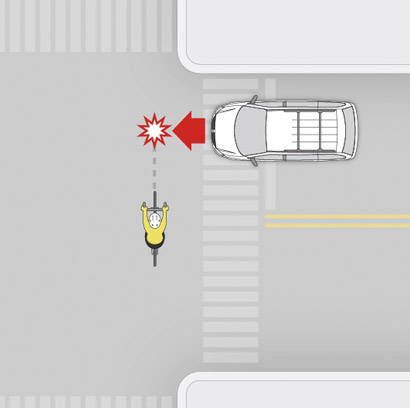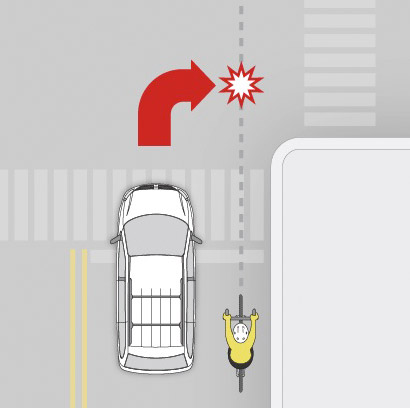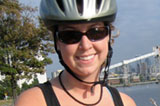bike Crash scenarios and how to avoid them
Knowing the most common causes of bike/car crashes is a great step forward in being ready to avoid them. Please keep in mind, this isn't about blaming anyone for causing accidents, certainly not car drivers. It doesn't matter who's to blame if you're dead. The only time finding fault helps is when we learn how to avoid mistakes. Sometimes that means a bicyclist avoids making a common mistake, and sometimes that means the bicyclist is watching for common driver mistakes. Either way, you can keep yourself much safer by knowing what to look for and paying attention.
This information is gathered from multiple sources including the National Highway Traffic Safety Administration, and is not in any particular order. These are all dangerous situations, and should be navigated with equal caution.
1. Car pulls out from side street
A car pulls out from an intersection or a drivway and either strikes a crossing bicyclist or is struck by the bicyclist, who is crossing from a 90-degree angle.

How to Avoid it - Use a headlight so drivers can see you. Pay attention. Slow down if you see a car waiting at an intersection or driveway. Give yourself enough time to react in case the driver pulls out. Make eye contact with drivers to confirm that they see you. If you don't make eye contact, use extra caution. Don't ride too far into the gutter, drivers don't see you there. Occupy the lane, it's your right, and it's safer.
2. Parked Car Opens Door
A door opens from a parked car, in the bicyclyst's path.
How to Avoid it - Ride to the left side of the bike lane, or at least arm's length from parked cars. Look into the windows of parked cars if you can. Look for people who might open a door. If you can't see inside the car, assume that a door could open at any moment. If a door does open, don't swerve. Hit it. Most deaths in this situation occur when the cyclist swerves to avoid the door and is struck by passing traffic or glances off the door into traffic.
3. Car Makes a Right Turn
A car makes a right turn at an intersection or driveway where a bicyclist is traveling straight across the intersection. The car either strikes the bicyclist directly or is struck by the bicyclist. I've seen this happen myself, and the cyclist died. Drivers often think that cyclists are going slower than they are, so they think they are safely past you - or they didn't see you to begin with.

How to Avoid it - Always assume that a car is going to turn right into or in front of you, even with no turn signal. Don't try to race them accross the intersection. Make sure you are not in anyone's blind spot. When waiting at a red light, pull ahead enough so you are sure drivers sees you. Look at them, make eye contact. If a car passes you just before an intersection, assume they might turn right. Use a bright tail light and reflective clothing.
4. Cyclist rides out into road
A cyclist rides out into the road from an intersecting road or driveway, is struck by a passing car.
How to Avoid it - I don't know what to say about this one, look both ways, like your mom told you. Maybe think about lights and reflectors. Obey traffic signals. Bikes are vehicles, you don't get any special rights, sorry.
5. Car makes a left turn, facing cyclist
Car turns left across the road or intersection and strikes cyclist travelling straight across the intersection.
How to Avoid it - Use a headlight, even in the day. Wear reflectors. Pay attention. Watch for on-coming cars that look like they might turn in front of you. Don't ride on the sidewalk. Cyclists are often hit in this way when they are crossing at the crosswalk. Stay on the road where drivers are more likely to see you.
Coming Soon: More crash types and DIAGRAMS.




